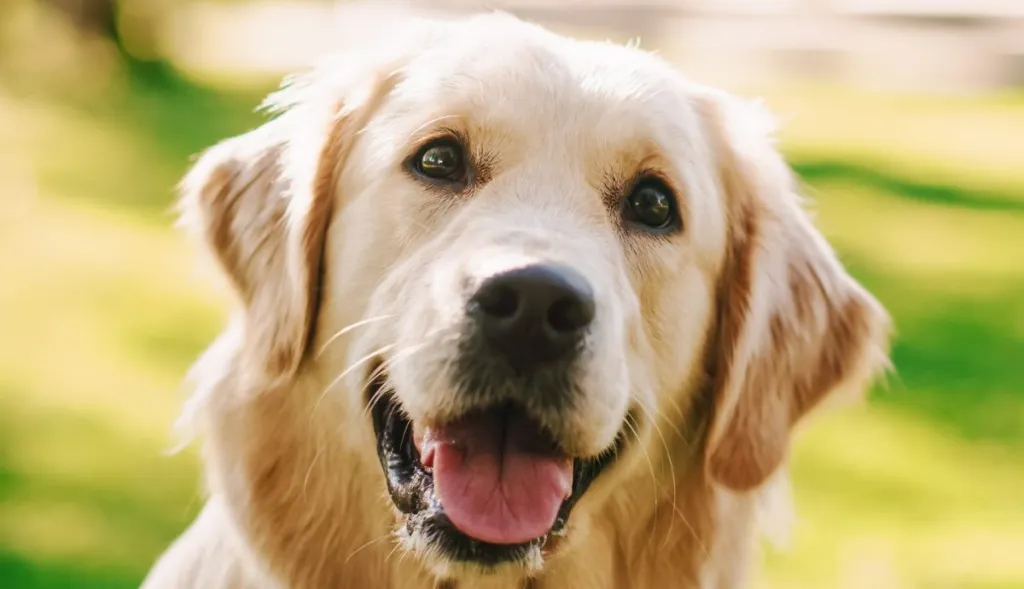
Golden Retriever
The Golden Retriever is a medium-sized retrieving breed from Scotland known for their gentle nature and silky golden coat. The Golden’s affectionate and playful temperament makes them great family pets for individuals and households. They are also highly intelligent and empathic and often excel in roles as service dogs or therapy dogs. It’s no surprise that the Golden Retriever is among the top ten most popular dogs in the United States!
Due to their high-energy levels and grooming needs, the Golden Retriever may be high-maintenance for some. Their luxurious coat requires regular attention to avoid matting, especially during shedding season, and their active minds need plenty of mental stimulation. They also require a lot of exercise and shouldn’t be left alone for long periods as they can be prone to separation anxiety. However, if you can provide these essentials, a Golden Retriever will repay you twofold with their love and loyalty.
When considering a Golden Retriever, it’s advisable to prioritize adopting from rescue organizations or shelters to provide a loving home to a dog in need. However, if you decide to purchase a Golden Retriever puppy, it’s crucial to choose a reputable breeder. Conduct thorough research to ensure that the breeder follows ethical practices and prioritizes the well-being of their dogs. Reputable Golden Retriever breeders prioritize the health and temperament of their dogs, conduct necessary health screenings, and provide a nurturing environment for the puppies. This active approach ensures you bring home a healthy and happy pup while discouraging unethical breeding practices.
Quick Facts
- Origin: Scotland
- Size: 55-75 pounds (25-34 kg) for females and 65-75 pounds (29-34 kg) for males.
- Lifespan: 10-12 years
- Coat: Dense, water-repellent double coat that is usually golden in color. They can have different shades of gold, from pale to dark. The English Cream Golden Retriever stands out with their stunning ivory coat.
- Temperament: Golden Retrievers are friendly, intelligent, and devoted dogs. They are known for their gentle and patient nature, making them excellent family pets and service dogs.
- Exercise Needs: They have moderate to high exercise requirements. Regular walks, playtime, and mental stimulation are important for their well-being.
- Training: Golden Retrievers are highly trainable and eager to please. They excel in obedience and various activities like agility and therapy work.
- Grooming: Their coat requires regular brushing to prevent matting, especially during shedding seasons. They shed moderately year-round and more heavily during shedding periods.
- Health: Golden Retrievers can be prone to certain health issues, including hip and elbow dysplasia, cancer, and heart conditions. Regular veterinary care and a balanced diet are important for their overall health.
- The character “Buddy” from the film “Air Bud” was a Golden Retriever.
- Golden retrievers are known for their “soft mouths.” This means that they can carry objects in their mouths without biting or crushing them, making them ideal for retrieving game birds and other objects.
Golden Retriever Pictures

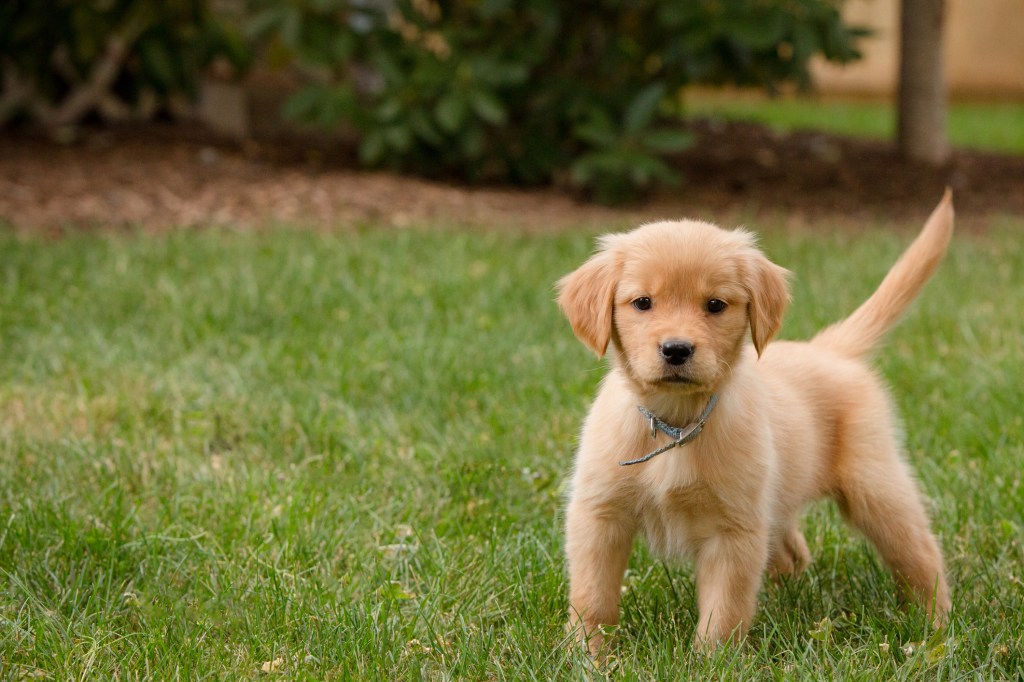
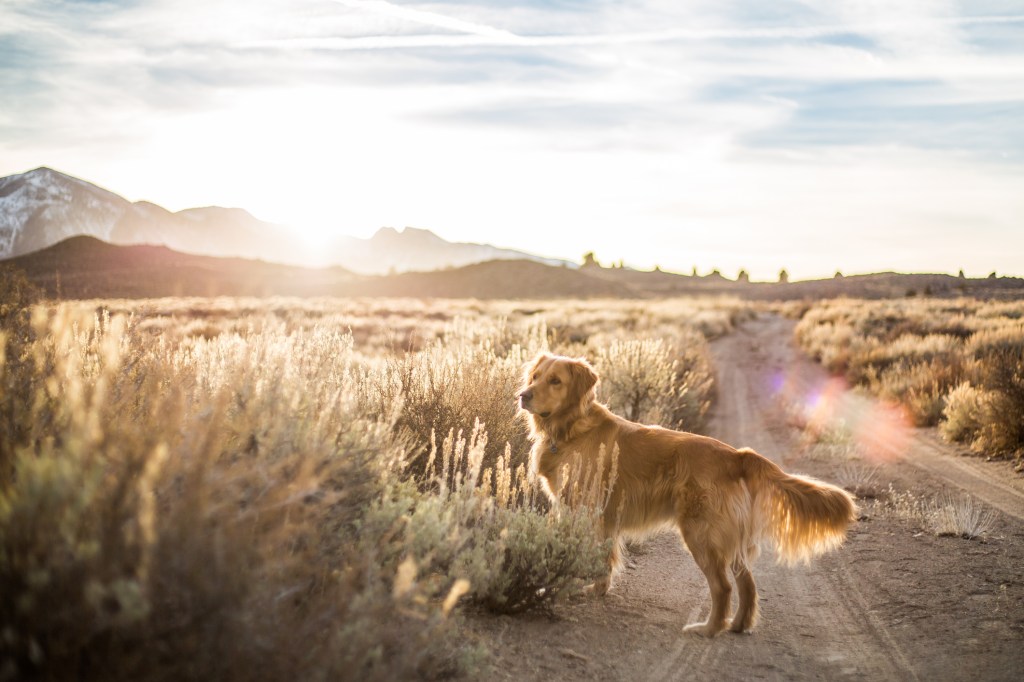
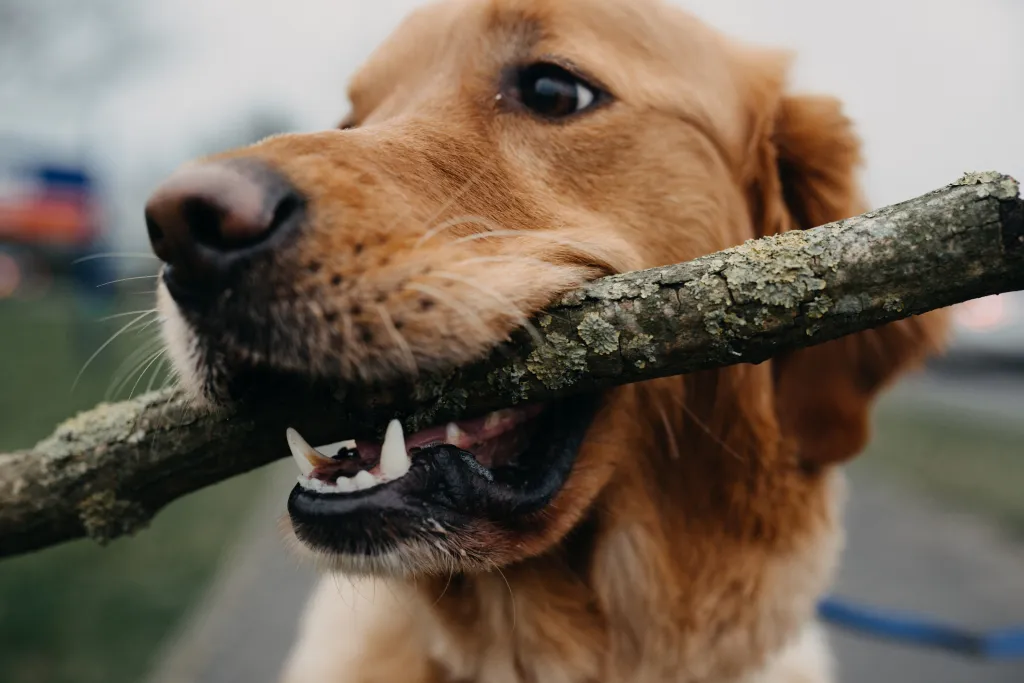
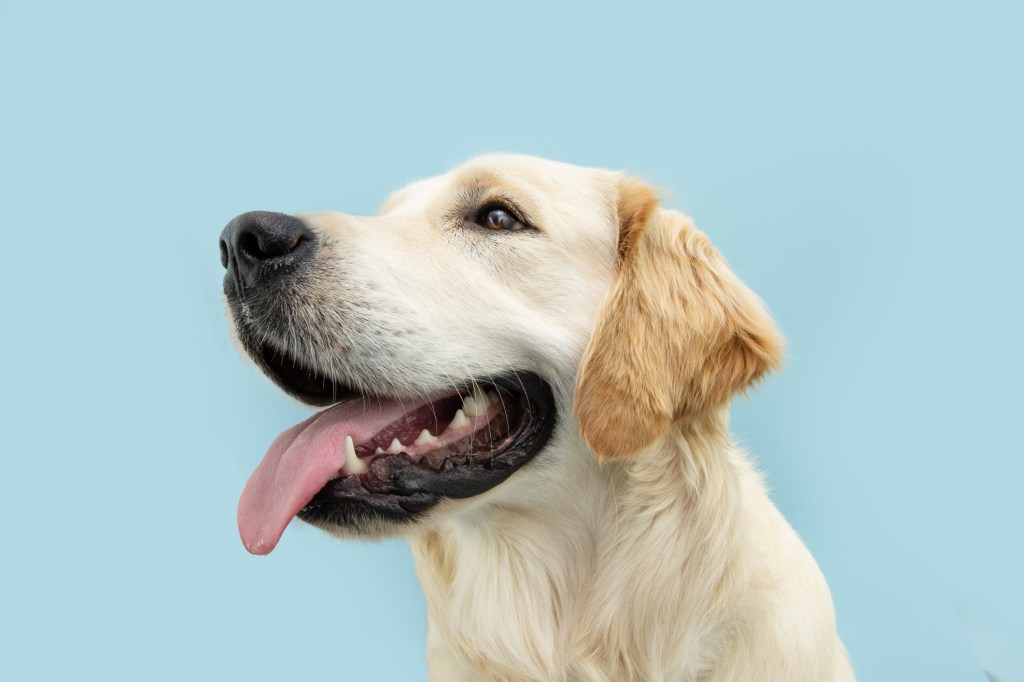
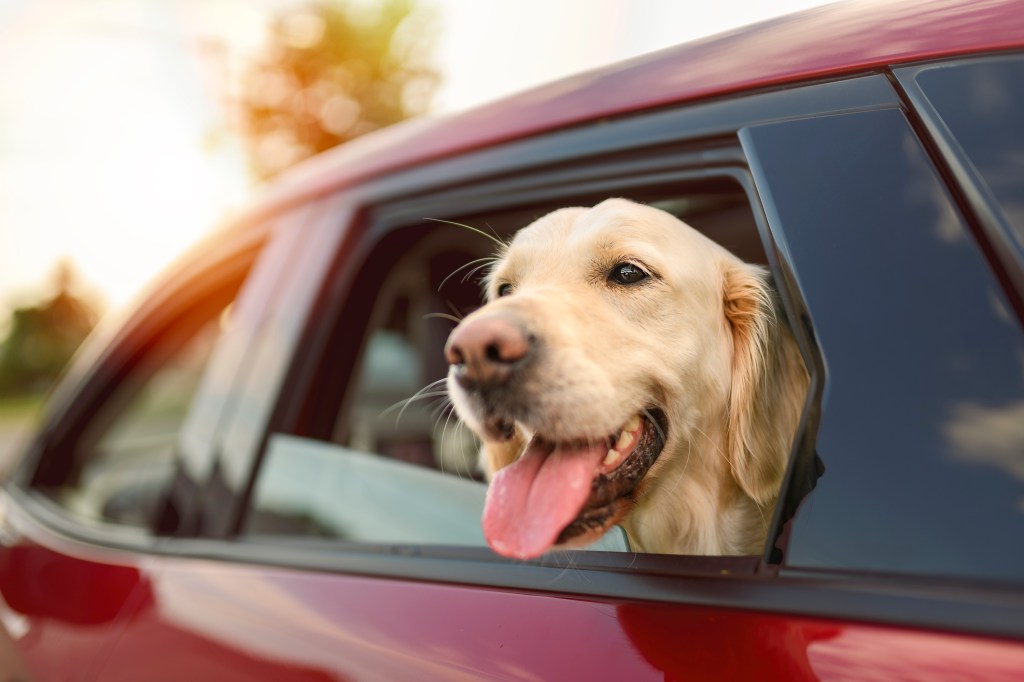
Golden Retriever Overview
It’s all good with the Golden: he’s highly intelligent, sociable, beautiful, and loyal. He’s also lively. The Golden dog is slow to mature and retains a puppy’s silly, playful personality until three to four years of age, which can be both delightful and annoying. Many keep their puppyish traits into old age.
Originally bred for the physically demanding job of retrieving ducks and other fowl for hunters, the Golden needs daily exercise: a walk or jog, free time in the yard, a run at the beach or lake (Goldens love water), or a game of fetch. And like other intelligent breeds bred to work, they need to have a job to do, such as retrieving the paper, waking up family members, or competing in dog sports. A tired Golden is a well-behaved Golden.
As well as giving your Golden Retriever physical and mental exercise, you should also be prepared to include him in your family activities. The Golden Retriever is a family dog who needs to be with his “pack.” Don’t consider getting a Golden unless you’re willing to have him in the house with you, underfoot, every day. There’s one other potential drawback to the breed: He’s not a watchdog. He might bark when strangers come around but don’t count on it. He’ll likely wag his tail and flash that characteristic Golden smile.
Golden Retriever Highlights
Friendly and Gentle: They have a reputation for being one of the friendliest and most gentle dog breeds. They are affectionate and kind and often get along well with children and other pets.
Intelligent and Trainable: Golden Retrievers are highly intelligent and eager to please, making them relatively easy to train. They excel in various dog sports and activities and are often used as service dogs due to their adaptability and willingness to work.
Beautiful Coat: Their luscious double coat is one of their defining features. It comes in various shades of gold and is water-repellent, helping them stay comfortable in wet conditions.
Playful and Energetic: Golden Retrievers are known for their playful and energetic nature. They love outdoor activities, such as fetch and swimming, and require regular exercise to stay happy and healthy.
Loyal and Devoted: They form strong bonds with their families and are known for their loyalty and devotion. They often become cherished members of the family.
Versatile Companions: Golden Retrievers can adapt to various living situations, from families with children to singles and seniors. They are also often used as therapy dogs, providing comfort and companionship in hospitals and nursing homes.
Community Involvement: This breed is often involved in search and rescue missions, as well as as therapy dogs, due to their friendly and calming demeanor.
Shedding: While their beautiful coat is a highlight, they also shed quite a bit. Regular grooming is necessary to manage their shedding.
Golden Retriever History
For many years, a legend was that Golden Retrievers were descended from Russian sheepdogs bought from a circus. In fact, the breed was developed in Scotland at the highland estate of Sir Dudley Majoribanks, later known as Lord Tweedmouth. Tweedmouth, like many gentry of his day, bred animals of all kinds, trying to perfect different breeds.
Tweedmouth’s breeding records from 1835 to 1890 show what he was aiming for with the Golden: A talented retriever — Tweedmouth was an ardent waterfowl hunter — with a superb nose, who would be more attentive to his human hunting companion than the setters and spaniels used at the time for retrieving. He also wanted the dog to be loyal and even-tempered in the home. Tweedmouth took Nous home to Scotland and, in 1868 and 1871, bred him to Belle, a Tweed Water Spaniel.
Tweed Water Spaniels (now extinct) were known for being eager retrievers in the hunting field and exceptionally calm and loyal in the home — characteristics you’ll find in today’s Golden Retrievers. Nous and Belle’s descendants were bred with Wavy- and Flat-coated retrievers, another Tweed Water Spaniel, and a red setter.
Tweedmouth kept mostly the yellow puppies to continue his breeding program, and gave others away to friends and relatives. Not surprisingly, Tweedmouth’s breed first attracted attention for their skills in the hunting field. One of the most well-known was Don of Gerwyn, a liver-coated descendent of one of Tweedmouth’s dogs, who won the International Gundog League trial in 1904. The Kennel Club in England officially recognized the Golden Retriever as a distinct breed in 1911. They were then classified as “Retriever — Yellow or Golden.” In 1920, the breed name was officially changed to Golden Retriever. The American Kennel Club recognized the breed in 1932. Today, the Golden Retriever is the second most popular breed in the U.S.
Golden Retriever Size
Males are 23 to 24 inches tall and weigh 65 to 75 pounds. Females are generally 21.5 to 22.5 inches tall and 55 to 65 pounds. Golden Retrievers usually reach their full height by one year of age, and their mature weight by two.
Golden Retriever Personality
A sweet, calm nature is the hallmark of the breed. The Golden was bred to work with people and is eager to please his owner. Though hard-wired with a good disposition, like all dogs, the Golden must be well-raised and well-trained to make the most of his heritage. Like every dog, the Golden needs early socialization — exposure to many different people, sights, sounds, and experiences — when young. Socialization helps ensure that your Golden puppy grows into a well-rounded dog.
Golden Retriever Health
Goldens are generally healthy, but like all breeds, they’re prone to certain health conditions. Not all Goldens will get any or all of these diseases, but it’s important to be aware of them if you’re considering this breed. If you’re buying a puppy, find a good breeder who will show you health clearances for both your puppy’s parents. Health clearances prove that a dog has been tested for and cleared of a particular condition. In Goldens, you should expect to see health clearances from the Orthopedic Foundation for Animals (OFA) for hip dysplasia (with a score of fair or better), elbow dysplasia, hypothyroidism, and von Willebrand’s disease; from Auburn University for thrombopathia; and from the Canine Eye Registry Foundation (CERF) certifying that eyes are normal. You can confirm health clearances by checking the OFA website (offa.org).
- Hip Dysplasia: Hip dysplasia is a heritable condition in which the thighbone doesn’t fit snugly into the hip joint. Some dogs show pain and lameness on one or both rear legs, but you may not notice any signs of discomfort in a dog with hip dysplasia. As the dog ages, arthritis can develop. X-ray screening for hip dysplasia is done by the Orthopedic Foundation for Animals or the University of Pennsylvania Hip Improvement Program. Dogs with hip dysplasia should not be bred. If you’re buying a puppy, ask the breeder for proof that the parents have been tested for hip dysplasia and are free of problems.
- Elbow Dysplasia: This is a heritable condition common to large-breed dogs. It’s thought to be caused by different growth rates of the three bones that make up the dog’s elbow, causing joint laxity. This can lead to painful lameness. Your vet may recommend surgery to correct the problem or medication to control the pain.
- Cataracts: As in humans, canine cataracts are characterized by cloudy spots on the eye lens that can grow over time. They may develop at any age and often don’t impair vision, although some cases cause severe vision loss. Breeding dogs should be examined by a board-certified veterinary ophthalmologist to be certified as free of hereditary eye disease before they’re bred. Cataracts can usually be surgically removed with good results.
- Progressive Retinal Atrophy (PRA): PRA is a family of eye diseases that involves the gradual deterioration of the retina. Early in the disease, dogs become night-blind. As the disease progresses, they lose their daytime vision as well. Many dogs adapt to limited or complete vision loss very well, as long as their surroundings remain the same.
- Subvalvular Aortic Stenosis: This heart problem is caused by a narrow connection between the left ventricle (out-flow) and the aorta. It can cause fainting and even sudden death. Your vet can detect it and prescribe the proper treatment.
- Osteochondrosis Dissecans (OCD): This orthopedic condition, caused by improper growth of cartilage in the joints, usually occurs in the elbows, but it has been seen in the shoulders as well. It causes a painful stiffening of the joint, to the point that the dog is unable to bend his elbow. It can be detected in dogs as early as four to nine months of age. Overfeeding of “growth formula” puppy foods or high-protein foods may contribute to its development.
- Allergies: Golden Retrievers can be allergic to a variety of substances, ranging from food to pollen. If your Golden is licking his paws or rubbing his face a great deal, have him checked by your vet.
- Von Willebrand’s Disease: This is an inherited blood disorder that interferes with the blood’s ability to clot. The main symptom is excessive bleeding after an injury or surgery. Other symptoms include nosebleeds, bleeding gums, or bleeding in the stomach or intestines. There is no cure, and a blood transfusion from the blood of normal dogs is currently the only treatment. Research is underway for new treatments, including medication. Most dogs with von Willebrand’s disease can lead normal lives. A vet can test your dog for the condition. Dogs with this condition should not be bred.
- Gastric Dilatation-Volvulus: Commonly called bloat, this is a life-threatening condition that affects large, deep-chested dogs like Golden Retrievers, especially if they’re fed one large meal a day, eat rapidly, or drink large amounts of water or exercise vigorously after eating. Bloat occurs when the stomach is distended with gas or air and then twists. The dog is unable to belch or vomit to rid himself of the excess air in his stomach, and blood flow to the heart is impeded. Blood pressure drops, and the dog goes into shock. Without immediate medical attention, the dog can die. Suspect bloat if your dog has a distended abdomen, is drooling excessively, and retching without throwing up. He also may be restless, depressed, lethargic, and weak with a rapid heart rate. If you notice these symptoms, get your dog to the vet as soon as possible.
- Epilepsy: Epilepsy is a brain disorder that causes periodic seizures and convulsions. Your vet will need to know how severe the seizures are and how often they occur to determine what medication to prescribe, if any.
- Hypothyroidism: This is a disorder of the thyroid gland that’s thought to cause conditions such as epilepsy, hair loss, obesity, lethargy, dark patches on the skin, and other skin conditions. It’s treated with medication and diet.
- Hemangiosarcoma: This is a very dangerous form of cancer that originates in the lining of blood vessels and spleen. It most commonly occurs in middle-aged and elderly dogs.
- Osteosarcoma: Osteosarcoma is a malignant bone cancer that’s common in large and giant breeds.
- Portosystemic Shunt (PSS): This is an abnormal flow of blood between the liver and the body. That’s a problem because the liver is responsible for detoxifying the body, metabolizing nutrients, and eliminating drugs. Signs can include but are not limited to neurobehavioral abnormalities, lack of appetite, hypoglycemia (low blood sugar), intermittent gastrointestinal issues, urinary tract problems, drug intolerance, and stunted growth. Signs usually appear before two years of age. Corrective surgery can be helpful in long-term management, as can a special diet.
- Atopic dermatitis: Atopic dermatitis (AD) — often simply referred to as atopy — is a chronic inflammatory skin disease in dogs. Similar to eczema in humans, it is one of the most prevalent allergic skin conditions, affecting approximately 10-15% of the canine population. The condition is usually triggered by an overreaction of the dog’s immune system to environmental allergens, including pollen, mold spores, dust mites, and even certain foods. These allergens typically penetrate the skin barrier and initiate an immune response that leads to inflammation, itching, and other clinical signs.
- Episcleritis: Episcleritis in dogs is an inflammatory condition of the episclera, which is the thin layer of tissue between the conjunctiva and sclera — the white part of the eye. It is characterized by localized or diffuse redness and swelling in the affected area, giving the eye an irritated or bloodshot appearance.
Golden Retriever Care
Golden Retrievers are built for action and love outdoor romps. If you like hiking or jogging, your Golden will happily join you. And if you feel like tossing a ball in the backyard, they’d be more than happy to join you; true to their name, Goldens love to retrieve. Tiring them out with 20-30 minutes of vigorous exercise twice daily will keep your dog mellow when he’s back inside. Slacking on the activity, however, could lead to behavior problems.
Like other retriever breeds, Goldens are naturally “mouthy,” and they’re happiest when they have something to carry in their mouths: a ball, soft toy, newspaper, or, best of all, a smelly sock. You’ll need special care if you’re raising a Golden puppy. These dogs grow very rapidly between the ages of four and seven months, making them susceptible to bone disorders. Don’t let your Golden puppy run and play on very hard surfaces such as pavement until he’s at least two years old and his joints are fully formed. Normal play on grass is fine, and so are puppy agility classes.
Golden Retriever Feeding
Recommended daily amount: 2 to 3 cups of high-quality dry food a day, divided into two meals. How much your adult dog eats depends on his size, age, build, metabolism, and activity level. Dogs are individuals, just like people, and they don’t all need the same amount of food. It almost goes without saying that a highly active dog will need more than a couch potato dog. The quality of dog food you buy also makes a difference — the better the dog food, the further it will go toward nourishing your dog and the less of it you’ll need to shake into your dog’s bowl.
Keep your Golden in good shape by measuring his food and feeding him twice a day rather than leaving food out all the time. If you’re unsure whether he’s overweight, give him the eye test and the hands-on test. First, look down at him. You should be able to see a waist. Then place your hands on his back, thumbs along the spine, with the fingers spread downward. You should be able to feel but not see his ribs without having to press hard.
If you can’t, he needs less food and more exercise. You’ll need to take special care if you’re raising a Golden puppy. These dogs grow very rapidly between the age of four and seven months, making them susceptible to bone disorders. They do well on a high-quality, low-calorie diet that keeps them from growing too fast. For more on feeding your Golden, see our guidelines for buying the right food, feeding your puppy, and feeding your adult dog.
Golden Retriever Coat Color And Grooming
Golden Retrievers have a dense, water-repellent outer coat with a thick undercoat. Some coats are wavy, some are straight. The fur feathers on the back of the front legs and underbody, with heavier feathering on the chest, back of the thighs, and tail. Golden Retrievers come in all shades of gold, from light to dark gold.
Some breeders have begun selling “rare white Goldens,” but the American Kennel Club does not recognize white as a coat color for the breed. Golden Retrievers shed moderately in the winter and summer, and heavily in the spring and fall. If you live with a Golden, you’ll need to adapt to a certain amount of dog hair in your house and on your clothes. The Golden’s thick coat means lots of grooming. Daily brushing is recommended to prevent tangling, and once a week is the bare minimum. Your Golden will also need a bath at least once a month, often more frequently, to keep him looking and smelling clean.
Brush your Golden’s teeth at least two or three times a week to remove tartar buildup and the bacteria inside it. Daily brushing is even better to prevent gum disease and bad breath. Trim nails once or twice a month if your dog doesn’t wear them down naturally. They’re too long if you hear them clicking on the floor.
Short, neatly trimmed nails keep the feet in good condition. Dog toenails have blood vessels in them, and if you cut too far you can cause bleeding — and your dog may not cooperate the next time he sees the nail clippers come out. So, if you’re not experienced trimming dog nails, ask a vet or groomer for pointers. Fold-over ears create a warm, dark environment for bacteria or fungus to grow in, and breeds that have them — such as the Golden — are prone to ear infections. His ears should be checked weekly for redness or a bad odor, which can indicate an infection. Check them every time he gets wet, too.
When you check your dog’s ears, wipe them out with a cotton ball dampened with gentle, pH-balanced ear cleaner to help prevent infections. Don’t insert anything into the ear canal; just clean the outer ear. Begin accustoming your Golden to being brushed and examined when he’s a puppy. Handle his paws frequently — dogs are touchy about their feet — and look inside his mouth. Make grooming a positive experience with praise and rewards, and you’ll lay the groundwork for easy veterinary exams and other handling when he’s an adult. As you groom, check for sores, rashes, or signs of infection, such as redness, tenderness, or inflammation on the skin, nose, mouth, eyes, and feet. Eyes should be clear, with no redness or discharge. Your careful weekly exam will help you spot potential health problems early.
Golden Retriever Children And Other Pets
The amiable Golden Retriever isn’t bothered by the noise and commotion of kids — he thrives on it. He’s a large, strong dog, though, and he can easily knock over a small child by mistake. As with every breed, you should always teach children how to approach and touch dogs and always supervise any interactions between dogs and young children to prevent any biting or ear or tail pulling on the part of either party.
Teach your child never to approach any dog while it’s eating or sleeping or to try to take the dog’s food away. No dog, no matter how friendly, should ever be left unsupervised with a child. The Golden’s attitude toward other pets is the more, the merrier. He enjoys the companionship of other dogs and, with proper introductions and training, can be trusted with cats, rabbits, and other animals.
Golden Retriever Rescue Groups
Goldens are often purchased without a clear understanding of what goes into owning one. Many Goldens are in need of adoption and/or fostering. We have not listed a number of rescues. If you don’t see a rescue listed for your area, contact the national breed club or a local breed club, and they can point you toward a golden rescue.
Golden Retriever Breed Organizations
Finding a reputable dog breeder is one of the most important decisions when bringing a new dog into your life. Reputable breeders are committed to breeding healthy, well-socialized puppies that will make great companions. They will screen their breeding stock for health problems, socialize their puppies from a young age, and provide you with lifetime support.
Conversely, backyard breeders are more interested in making a profit than in producing healthy, well-adjusted dogs. They may not screen their breeding stock for health problems or socialize their puppies properly. As a result, puppies from backyard breeders are more likely to have health and behavioral issues.



